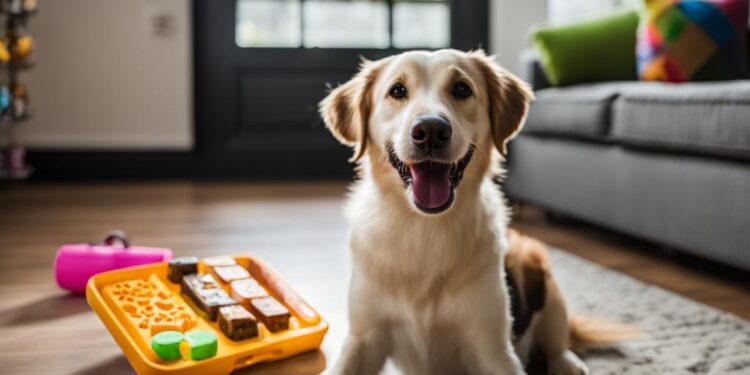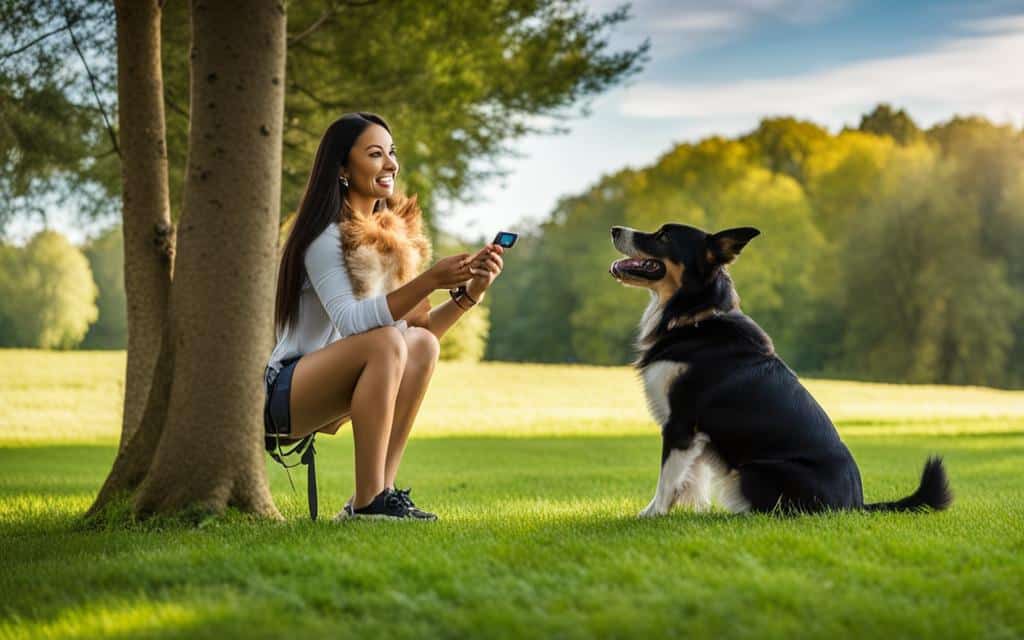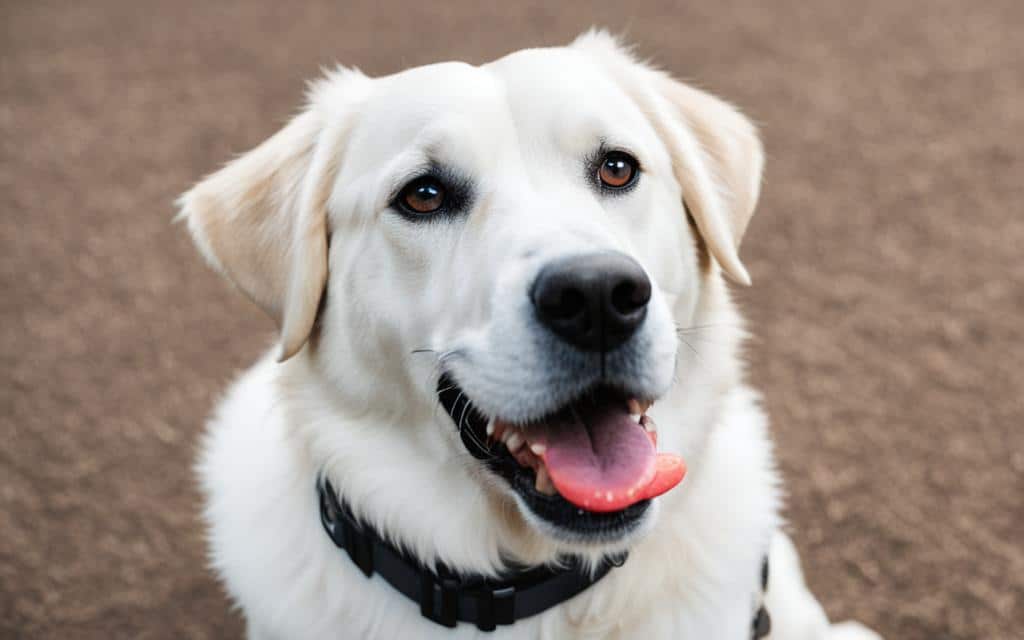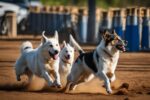Clicker Training: A Step-by-Step Guide for Dogs

Welcome to our comprehensive guide on clicker training for dogs. In this article, we will explain how clicker training, a form of positive reinforcement, can be a highly effective and enjoyable method for training your furry friend. By using a small plastic device called a clicker, you can communicate with your dog, signal desired behaviors, and strengthen the bond between you and your pet.
With our step-by-step guide, you will learn how to introduce your dog to the clicker, use it to teach commands and tricks, and achieve consistent results. Clicker training is based on the principle that behaviors that are rewarded are more likely to be repeated, making it a powerful tool in shaping your dog’s behavior.
Throughout this guide, we will emphasize the importance of positive reinforcement and the benefits it brings to your training sessions. By associating the clicker with rewards and following commands, your dog will be motivated to learn and eager to please.
So, if you’re ready to embark on a rewarding journey of clicker training with your canine companion, let’s dive in and discover the step-by-step process to unleash your dog’s potential!
What is Clicker Training and How Does it Work?
A dog-training clicker is a simple and inexpensive device that makes a distinct clicking sound. Clicker training relies on positive reinforcement, where the clicker is used to inform the dog that they have performed the desired behavior correctly and a reward is forthcoming. When the dog hears the clicker, they know they will receive a treat. This method is based on the science of animal learning, which states that behaviors that are rewarded are more likely to be repeated in the future. Clicker training is a precise and effective way to communicate with your dog during training sessions.
Using a dog-training clicker, you can communicate with your dog in a clear and consistent manner. By associating the clicker with rewards, your dog learns to associate the sound with positive outcomes. When your dog performs the desired behavior and hears the click, they understand that they have done something right and will be rewarded.
Clicker training is based on the principles of positive reinforcement. Rather than using aversive techniques, such as punishment or corrections, clicker training focuses on rewarding desired behaviors. This positive approach not only helps to reinforce good behavior but also strengthens the bond between you and your dog.
One of the key advantages of clicker training is its precision. The clicker allows you to mark the exact moment your dog performs the desired behavior, making it easier for them to understand what they are being rewarded for. This clarity helps to accelerate the learning process and enables your dog to learn new commands and behaviors more quickly.
“Clicker training is a powerful tool for shaping your dog’s behavior through positive reinforcement. It’s a win-win situation for both you and your furry friend.”
| Benefits of Clicker Training | Advantages of Positive Reinforcement |
|---|---|
|
|
How to Use a Dog-Training Clicker
Using a dog-training clicker is easy and can be done in a few simple steps. To start, you need to introduce your dog to the clicker by associating it with treats. Click the clicker and immediately give your dog a treat, repeating this process until they understand that the clicker means a reward is coming.
Once your dog is familiar with the clicker, you can use it to teach commands and tricks. Click the clicker when your dog performs the desired behavior, then follow it with a treat. Gradually add vocal commands and phase out the clicker as your dog becomes more proficient in following commands.
Clicker Training Steps
- Introduce the clicker by clicking and treating repeatedly until your dog associates the sound with a reward.
- Start with simple commands or behaviors, such as sit or stay.
- Click the clicker when your dog performs the desired behavior and immediately reward them with a treat.
- Repeat the process, gradually adding vocal commands while clicking and treating.
- Once your dog reliably performs the behavior with the vocal command, start to phase out the clicker and rely more on verbal praise and occasional treats.
| Benefits of Using a Dog-Training Clicker |
|---|
| Enhances communication with your dog |
| Aids in teaching complex tricks and behaviors |
| Helps establish a positive and cooperative relationship between you and your dog |
| Increases the likelihood of your dog repeating desired behaviors |

Tips for Successful Clicker Training
Successful clicker training relies on several key factors that contribute to effective communication and consistent results. By focusing on timing, reward consistency, treat size, positive reinforcement, and phasing out the clicker, you can optimize your clicker training sessions and enhance your dog’s learning experience.
Timing
Timing is crucial in clicker training. Clicking at the precise moment your dog performs the desired behavior helps them make the connection between the action and the reward. It’s important to be attentive and click immediately, ensuring that the click clearly marks the correct behavior. This helps reinforce the desired behavior more effectively.
Reward Consistency
Consistency is key when it comes to rewarding your dog during clicker training. Every click should be followed by a guaranteed treat, especially in the early stages of training. This consistency helps your dog understand that the clicker always means a reward is coming, reinforcing their motivation and desire to perform the desired behavior.
Treat Size
When choosing treats for clicker training, it’s important to consider their size. Opt for small treats that are easy for your dog to consume quickly. This prevents weight gain and allows for more frequent rewards during training sessions. Small, bite-sized treats also keep your dog focused and motivated, ensuring their attention remains on the training exercises.
Positive Note
It’s crucial to end each training session on a positive note. Ensure that the last behavior performed by your dog is correct, and follow it with a click, treat, and lots of praise. Ending the session with a positive experience reinforces your dog’s confidence and increases their enthusiasm for future training sessions.
Phasing Out the Clicker
As your dog becomes more proficient in following vocal commands, you can start phasing out the clicker and treats. Gradually reduce the reliance on the clicker by using praise as the primary reward, supplemented with occasional treats. This transition helps your dog generalize their understanding of the desired behaviors and strengthens their response to vocal commands.

| Tip | Description |
|---|---|
| Timing | Click during the correct behavior and immediately follow it with a treat to reinforce the behavior effectively. |
| Reward Consistency | Ensure every click is associated with a guaranteed treat, especially in the early stages of training. |
| Treat Size | Use small treats to prevent weight gain and maintain focus during training sessions. |
| Positive Note | End training sessions on a positive note with correct actions, a click, a treat, and lots of praise. |
| Phasing Out the Clicker | Gradually reduce reliance on the clicker as your dog becomes proficient in following vocal commands. |
Conclusion
Clicker training is a valuable tool for dog training that offers numerous benefits. Through positive reinforcement and effective communication, this method allows you to strengthen the bond with your dog while achieving desired behaviors. By using a simple clicker, you can mark the exact moment your dog performs the desired behavior and reinforce it with a reward.
One of the key advantages of clicker training is its ability to enhance the bond between you and your dog. By consistently rewarding your dog for their correct actions, you build trust, understanding, and a positive relationship. This positive association leads to increased motivation and enthusiasm during training sessions, making them enjoyable for both of you.
Furthermore, clicker training improves effective communication between you and your furry friend. The clicker serves as a clear and distinct signal that quickly and accurately informs your dog when they have done something right. This precise feedback helps them understand what behaviors are desired, enabling them to learn and respond more effectively to commands and cues.
Implementing the step-by-step guide provided in this article, you can successfully introduce clicker training into your dog’s routine and unleash their full potential. Enjoy the benefits of a stronger bond, effective communication, and a well-trained, happy, and obedient companion.
FAQ
What is clicker training and how does it work?
Clicker training is a method of training dogs using positive reinforcement. It involves using a small plastic device called a clicker that makes a distinct clicking sound when pressed. The clicker is paired with rewards, such as treats, to signal to the dog that they have performed the desired behavior correctly.
How do I use a dog-training clicker?
To use a dog-training clicker, you need to introduce your dog to the clicker by associating it with treats. Click the clicker and immediately give your dog a treat, repeating this process until they understand that the clicker means a reward is coming. Once your dog is familiar with the clicker, you can use it to teach commands and tricks.
What are some tips for successful clicker training?
Timing is crucial in clicker training. Click during the correct behavior and immediately follow it with a treat to reinforce the behavior effectively. In the early stages, every click should be associated with a guaranteed treat. The treats used should be small to prevent weight gain. Always end the training sessions on a positive note with correct actions, a click, a treat, and lots of praise.






